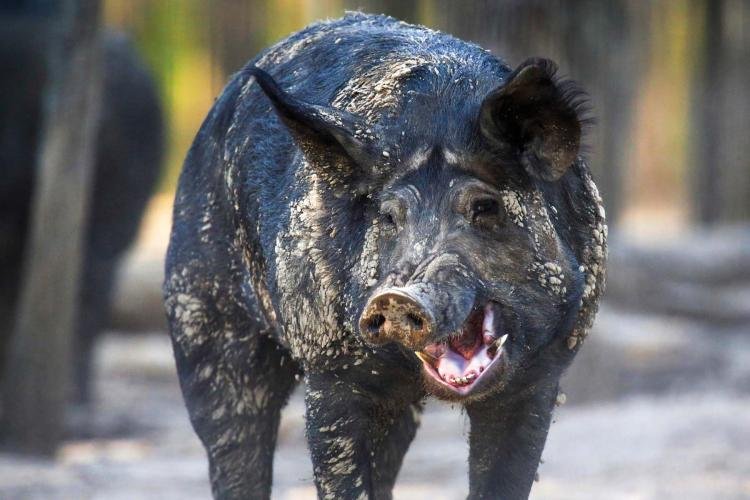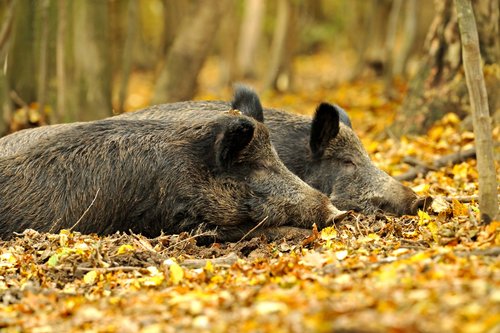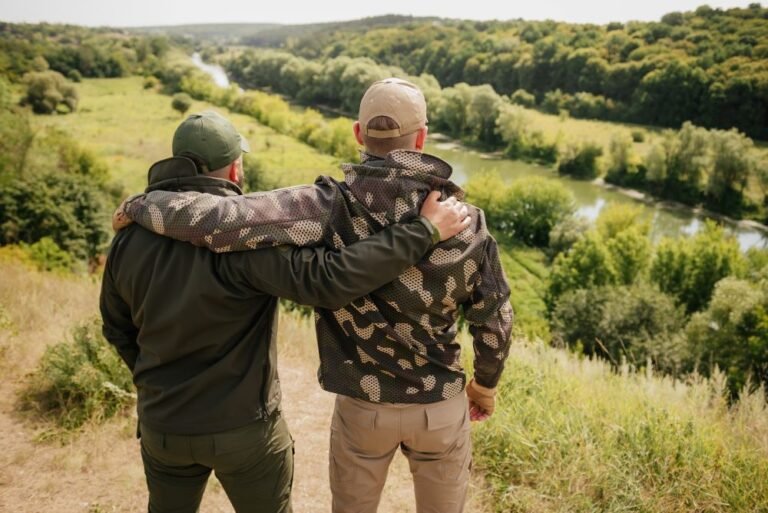Exploring the Best Hog Hunting Spots in Missouri
Welcome to the thrilling world of Missouri hog hunting, where adrenaline meets the great outdoors! Hog hunting has emerged as a highly sought-after recreational pursuit in the beautiful state of Missouri.
With its diverse landscapes and abundant wildlife, this Midwestern gem offers an ideal environment for hunters to test their skills and engage in exhilarating adventures. Whether you are a seasoned hunter or just starting, hog hunting in Missouri promises unforgettable experiences and stories.
Brief history of how feral hogs became a problem in the state
Behind the allure of hog hunting lies an underlying issue that has plagued the state: feral hogs. These wild creatures have unfortunately become a major problem in Missouri over the years. Originally brought to North America by European settlers for farming purposes, some hogs escaped or were released into the wild, leading to uncontrolled breeding and population growth.
Their adaptability, high reproductive rates, and destructive tendencies have caused significant damage to agricultural lands, natural habitats, and native wildlife populations. As these numbers soared, it became evident that effective management strategies were necessary to curb their impact on ecosystems and protect Missouri’s biodiversity.
So there you have it—a brief introduction to Missouri hog hunting and its entanglement with invasive feral hogs. Now brace yourself for more captivating information as we delve deeper into this exciting subject matter!
Detailed Description of Feral Hogs and Their Characteristics
Feral hogs, also known as wild boars or wild pigs, are a formidable species that roam Missouri’s woodlands and agricultural areas. These creatures are descendants of domestic pigs that escaped captivity or were released into the wild. One look at these creatures, and you’ll realize they mean business.
Feral hogs can vary in size, ranging from a few hundred pounds to over 600 pounds for mature boars. Their bodies are covered in coarse hair, and their most distinctive feature is their razor-sharp tusks that protrude from their mouths like weapons forged by nature.
Curious Contrasts
These fascinating beasts possess an interesting blend of delicate traits hidden beneath their rugged exteriors. Despite their bulky appearance, feral hogs boast remarkable agility and can easily navigate through dense vegetation.
They possess keen senses of smell and hearing, allowing them to detect danger from afar. Interestingly, feral hogs have poor eyesight, relying primarily on their acute sense of smell to find food sources or detect potential threats.
Explanation of Their Destructive Behavior and Impact on Ecosystems
While feral hogs may seem charismatic initially, they bring destruction wherever they roam. These voracious omnivores have an insatiable appetite and wreak havoc on ecosystems across Missouri. Using their powerful snouts designed for rooting, they tear through the soil in search of roots, tubers, insects, small mammals – anything edible that crosses their path.
Rumble in the Undergrowth
Their relentless digging damages native plant communities while contributing to soil erosion issues. The disturbance caused by feral hog activity disrupts the delicate balance within ecosystems by destroying natural habitats for other wildlife species.
Furthermore, these destructive creatures threaten agriculture, as they feast on crops, causing significant economic losses for farmers. To make matters worse, feral hogs multiply rapidly, with females capable of producing multiple litters each year.
This rapid population growth exacerbates the already severe problems their destructive behavior poses. Understanding the feral hogs’ characteristics and impact on Missouri’s ecosystems is crucial to fully comprehend the urgency of managing their populations effectively.
The next sections will delve into the legal aspects of hog hunting in Missouri and highlight some of the best locations for engaging in this thrilling outdoor pursuit. So strap on your boots and get ready to explore the exciting world of hog hunting in Missouri!

Legal Aspects of Hog Hunting in Missouri
Overview of hunting regulations and requirements in the state
When it comes to hog hunting in Missouri, it’s essential to familiarize yourself with the hunting regulations and requirements set by the state. The Missouri Department of Conservation (MDC) oversees these guidelines to ensure a sustainable and well-managed hunting experience. A valid hunting license is required for anyone participating in hog hunting.
However, additional permits may be necessary depending on the area and method you choose for your hunt. It’s important to note that specific rules might vary slightly based on factors such as seasons and locations, so thoroughly reviewing the MDC’s latest regulations is crucial.
Specific rules and permits related to hog hunting
To engage in hog hunting legally, hunters must adhere to specific rules and permits in Missouri. Firstly, hunters must be aware of any restrictions on firearms or ammunition used during hunts. Certain locations may have limitations or guidelines, so checking beforehand is vital.
Additionally, some areas require special permits or tags specifically designated for feral hogs due to their potential impact on ecosystems. These permits typically have limited numbers available each year or specific timeframes when they can be used—being proactive about obtaining these documents will save you from any unwanted surprises during your hunt.
By following these legal aspects closely, you can enjoy your Missouri hog hunting adventures while ensuring that you are abiding by all relevant regulations designed for conservation purposes. (Note: Remember this is an outline section; a full article would delve into more detail.)
Best Hunting Locations in Missouri
Highlighting various regions known for hog populations
Regarding Missouri hog hunting, several regions are hotspots for finding these elusive creatures. One such area is the state’s southeastern part, known for its dense forests and agricultural lands. Feral hogs have established a significant presence in this region, making it a prime location for hunters looking to test their skills and bag some pork.
Another region worth mentioning is the Ozarks, located in southern Missouri. This beautiful area offers stunning landscapes and boasts a thriving population of feral hogs.
The Ozarks provide an ideal habitat for these wild beasts with its rugged terrain and ample food sources. Hunters can expect exciting adventures as they navigate through the hills and valleys in pursuit of their prey.
Description of public lands, private ranches, and hunting clubs available for hog hunting
Options abound for those interested in pursuing Missouri hog hunting on public lands. The Mark Twain National Forest covers over 1.5 million acres across southern and central Missouri and provides ample opportunities to hunt feral hogs. With its diverse landscape and vast wilderness areas, this national forest offers an exciting challenge for hunters seeking an authentic outdoor experience.
If private land is more your style, many ranches throughout the state offer guided hog hunts or allow experienced hunters access to their properties. These private ranches often provide premium amenities such as comfortable lodging facilities and knowledgeable guides who can enhance your hunting experience.
Additionally, joining a hunting club can provide access to exclusive properties specifically managed for hog hunting. These clubs typically offer year-round membership benefits, including organized hunts, expert guidance from seasoned hunters, and camaraderie with fellow enthusiasts.
No matter your preferred setting or level of expertise, Missouri offers a range of options for hog hunting. Whether you choose public lands, private ranches, or hunting clubs, the state’s diverse landscapes and thriving hog populations ensure an unforgettable experience for any dedicated hunter.
Popular Hog Hunting Methods
Explanation of common techniques such as spot-and-stalk, baiting, and trapping
Regarding hog hunting in Missouri, hunters have adopted various methods to increase their chances of success. One popular technique is spot-and-stalk. This method requires patience and stealth as hunters spend time surveying the area for signs of hog activity, such as rooting or wallowing spots.
Once a target is spotted, the hunter moves quietly toward the hog while remaining concealed. Another commonly used approach is baiting.
Hunters strategically place food or attractants in designated areas to lure hogs into the open. This method allows for setting up blinds or tree stands nearby, providing an advantageous vantage point for a shot.
Trapping is another effective method employed by Missouri hog hunters. Live traps are set up with enticing bait inside, and once hogs enter the trap, they are captured unharmed.
Discussion on the use of firearms, bows, or dogs during hunts
When choosing a weapon for Missouri hog hunting, several options are available depending on personal preference and regulations. Firearms like rifles or shotguns are commonly used due to their power and range capabilities, allowing hunters to take down hogs effectively from a distance. However, some hunters prefer the challenge and thrill of using bows for a more intimate hunting experience.
Archery enthusiasts opt for compound bows or crossbows that offer accuracy and quietness when stalking hogs up close. In addition to firearms and bows, dogs can play a crucial role in hog hunting in Missouri.
Specially trained hog-hunting dogs can track scents through dense vegetation and help locate hidden hogs that may otherwise be challenging to spot with the human eye alone. These courageous canines assist by baying (barking loudly) at treed hogs or engaging in catch-and-hold behavior until the hunter arrives to dispatch the hog.
The use of dogs adds excitement and a sense of teamwork to the hunting experience, creating an unforgettable adventure for both hunters and their loyal companions. So, whether you prefer the stealthy approach of spot-and-stalk, the strategic nature of baiting, or even the assistance of trained hunting dogs, Missouri hog hunting offers many methods to suit every hunter’s style.
Essential Gear for Hog Hunting
The Right Tools Make All the Difference
Having the right gear can make or break your experience when it comes to hog hunting in Missouri. Let’s dive into the essential equipment to ensure a successful and enjoyable hunt.
Firearms and Ammunition
First things first, let’s talk about firearms. Regarding hog hunting, you’ll want something with enough stopping power to take down these robust creatures. Shotguns and rifles chambered in popular calibers like .308 Winchester or .30-06 Springfield are excellent choices.
Ensure your firearm is reliable and accurate, as you may need to take shots from various distances. Next up is ammunition.
Opt for expandable bullets designed specifically for hunting hogs, as they have better terminal performance. Hollow point rounds or those with polymer tips are great options that ensure maximum energy transfer upon impact.
Knives
A trusty knife is an indispensable tool for any hunter, and hog hunting is no exception. You’ll need a strong and sharp knife capable of field-dressing your harvest efficiently.
Look for knives with fixed blades and sturdy handles that provide a secure grip even in wet or bloody conditions. A blade length of around 3-5 inches should suffice for most field-dressing tasks.
Night Vision Scopes or Thermal Imaging Cameras
Now, here’s where things get exciting! If you want to up your hog hunting game, consider investing in night vision scopes or thermal imaging cameras. These optional tools allow you to see clearly in low-light conditions when hogs are most active.
Night vision scopes amplify available light sources, making it easier to spot hogs under the cover of darkness. On the other hand, thermal imaging cameras detect heat signatures emitted by animals’ bodies regardless of lighting conditions.
With these devices, you’ll have an edge over hogs that think they can outsmart you under the cover of night. Remember, while night vision and thermal imaging gear may enhance your chances of success, they are not mandatory for hog hunting.
But suppose you’re a passionate enthusiast looking to take your adventures to the next level. In that case, these tools can add a thrilling component to your hunts in Missouri hog-hunting hotspots. So there you have it – the essential gear for hog hunting in Missouri.
Ensure you come prepared with firearms and ammunition for taking down these tough beasts. And don’t forget your trusty knife for field dressing your harvest.
If you’re feeling adventurous and want to step up your game, consider adding night vision scopes or thermal imaging cameras. Now, go out there and experience the thrill of Missouri hog hunting like never before!
Hunting Tips and Strategies
Scouting Areas with Signs of Hog Activity
Regarding Missouri hog hunting, finding the right area to set up your hunt is crucial. Start by scouting locations that show signs of hog activity. Look for fresh rooting marks, wallows, or tracks in muddy areas.
These are clear indicators that hogs have been roaming around. Please pay attention to damaged crops or vegetation, as hogs are notorious for their destructive feeding habits.
Talking to local farmers or landowners can also provide valuable insights into recent hog sightings and preferred habitats. Remember, the more time you spend scouting and understanding hog behavior, the better prepared you’ll be for a successful hunt.
Effective Tactics like Wind Direction Awareness or Using Game Calls
Once you’ve identified promising Missouri hog hunting hotspots through scouting, it’s time to employ some effective tactics to increase your chances of a successful hunt. One important aspect is wind direction awareness—hogs have an exceptional sense of smell, so positioning yourself upwind from their location will prevent them from detecting your scent and fleeing before you get a shot.
Additionally, using game calls can be highly effective in attracting hogs towards your position. Mimicking their vocalizations such as grunts or squeals can pique their curiosity and bring them within range.
Experiment with different calls and techniques to find what works best for you. By diligently scouting areas with signs of hog activity and employing smart tactics like wind direction awareness and game calls during your Missouri hog hunts, you’ll significantly increase your chances of a thrilling hunting experience.
Hog Meat: Harvesting & Cooking
Proper Field Dressing Techniques for Wild Hogs
When harvesting wild hogs, proper field dressing techniques are essential to ensure the meat is of the highest quality. Once you’ve successfully hunted and downed a hog (congrats!), it’s time to get to work. First, ensure you have the necessary tools, like a sharp knife and gloves.
Begin by positioning the hog on its back and securing it in place. Carefully make an incision along the belly, from the anus to the chest.
Remember to take caution while cutting not to penetrate any organs or intestines. Next, remove the internal organs by carefully cutting around them and pulling them out gently.
Be sure to remove all traces of entrails for hygienic purposes. Rinse the cavity with water and pat dry using paper towels or a clean cloth.
Recipes and Cooking Suggestions for Preparing Delicious Wild Boar Meat
Now that you have harvested a wild boar during your thrilling Missouri hog-hunting adventure, it’s time for culinary magic! Wild boar meat offers a rich flavor that pairs well with various cooking methods and flavors. One popular recipe is slow-roasted wild boar shoulder: marinate a deboned shoulder in a mixture of olive oil, garlic cloves, rosemary sprigs, lemon juice, salt, pepper, and your favorite herbs overnight; then roast it low and slow in the oven until tender and succulent.
Another mouthwatering option is wild boar ribs braised in barbecue sauce – perfect for finger-licking gatherings! How about preparing a hearty wild boar stew for those seeking something more exotic?
Simmer seasoned meat cubes with vegetables like onions, carrots, and potatoes in a flavorful broth until everything melts-your-mouth delicious. Whether you’re grilling, roasting, stewing, or trying other cooking methods, the wild boar meat from your Missouri hog hunting expedition will impress your taste buds and those lucky enough to share the meal with you.
Conservation Efforts & Management Practices
Feral hogs have been wreaking havoc on Missouri’s natural ecosystems, causing significant damage to crops, native plants, and wildlife habitats. In response to this threat, wildlife agencies in the state have implemented various initiatives to control feral hog populations.
These efforts include targeted trapping and removal programs and aerial surveillance to identify hog hotspots for more efficient management. By actively monitoring and managing feral hog populations, these agencies aim to minimize the negative impacts of these invasive species on Missouri’s delicate ecosystems.
Highlighting Responsible Hunting Practices
While wildlife agencies shoulder much responsibility for managing feral hogs in Missouri, it is equally important for hunters to play their part and exercise responsible hunting practices. Hunters should always abide by state hunting regulations and obtain the necessary permits for hog hunting activities.
Additionally, they should avoid excessive harvesting or targeting of female hogs during breeding seasons, allowing for population sustainability. By adhering to ethical guidelines and practicing responsible hunting techniques, hunters can contribute positively towards maintaining a healthy balance between humans and feral hogs within the state.
Conclusion
Hog hunting in Missouri provides an exhilarating outdoor experience and an essential tool in controlling the rapidly growing population of feral hogs. Through ongoing conservation efforts by wildlife agencies and responsible hunting practices by enthusiasts, a harmonious balance can be achieved between humans and these invasive creatures. So gear up and explore the Missouri hog-hunting hotspots with eyes wide open for adventure – knowing that your participation contributes significantly towards protecting the state’s precious natural resources.





